Cycling New Zealand’s wild West Coast
Glaciers, snow covered Alps and rainforest: from Wanaka to Greymouth
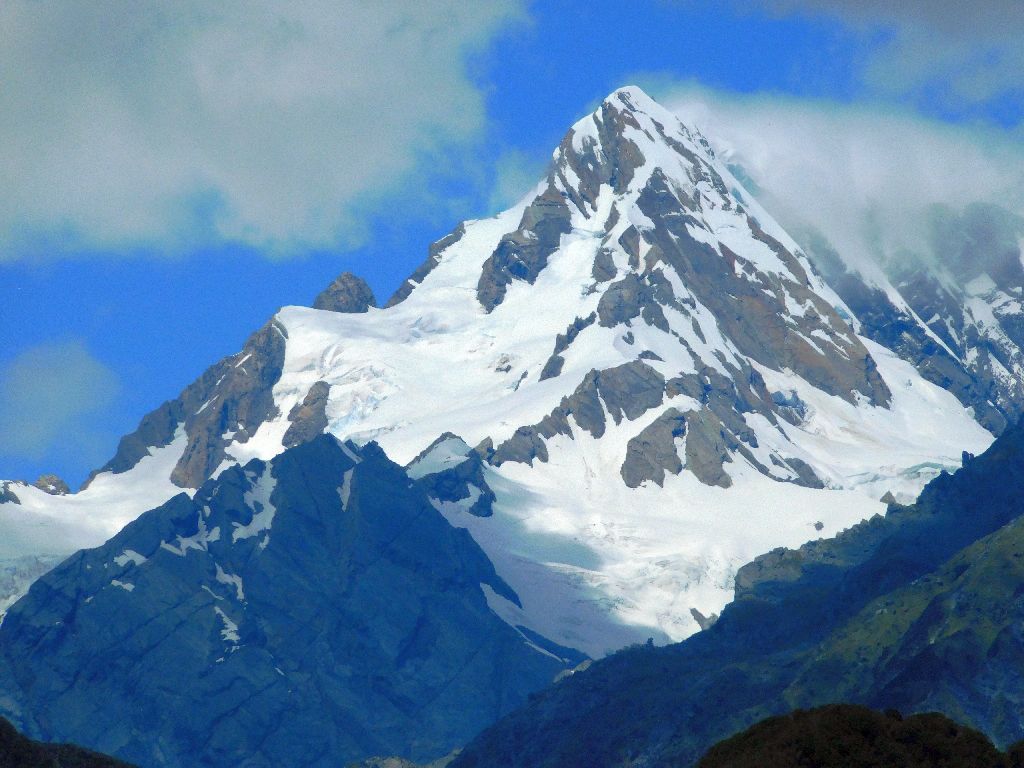
Christmas morning dawned quietly in New Zealand’s lush Makarora River valley, winding below snow capped Mount Aspiring National Park. Outside our simple backpackers cabin, our bicycles stayed dry, tucked under the eaves, as the rain pattered softly on the roof. Lorenz and I dug into our clothes panniers to find the few small Christmas gifts we had been hiding for days on our bicycles. We laid out our tiny stash under our impromptu Christmas “tree”—a bouquet of green ferns and bright red cherries hanging from branches that Lorenz had gathered from a tree outside.
Our cycling adventures around the 10,000 foot high Alps of New Zealand’s southern island had begun two weeks earlier in Christchurch (see our previous blog “Cycling New Zealand’s southern Alps “). Pedaling south and west into the Alps, we climbed over stunning mountain pass after pass, traveling along hundreds of miles of uninhabited roads to reach beautiful Wanaka—at the southern end of the famed west coast bike route.
In Wanaka, we were thrilled to find several streets of outdoor stores and hopping restaurants nestled along the edge of a long, deep mountain lake. A virtual metropolis!! Hungrily, in the gigantic, modern New World Supermarket, we grabbed forgotten luxuries–bags of nuts and dried fruit and chocolate; fresh bananas and oranges; sausages and salami. Our eyes widened in front of the stand of imported traditional British and German Christmas treats. “Mincemeat tarts!” I cried. “Lebkuchen!” Lorenz exclaimed, as we tossed favorite treats from our childhoods into the shopping cart.
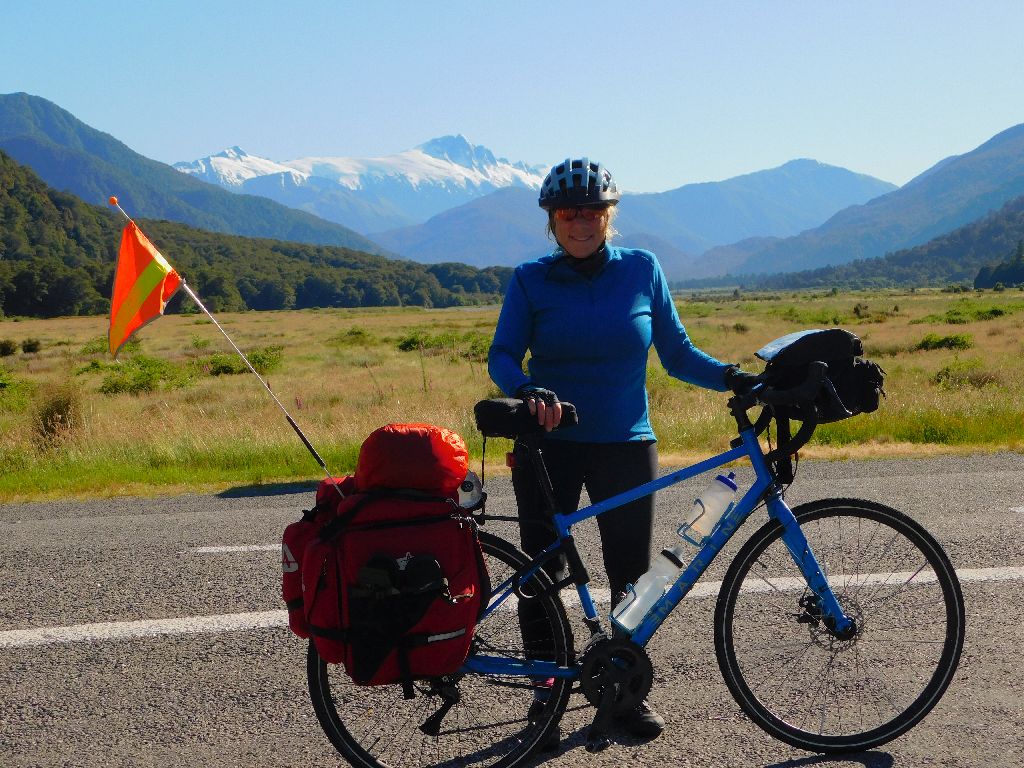
The next day, I was far from thrilled about all those extra treats. I regretted the extra weight in my panniers, as I huffed and puffed up and down seemingly endless climbs along beautiful but desolate Lake Wanaka and Lake Hawea. Battling against horrific headwinds, I cursed our overloaded panniers. Whose stupid idea was it to carry British plum pudding, Christmas crackers and German stollen up into the snow covered Alps towering above us?
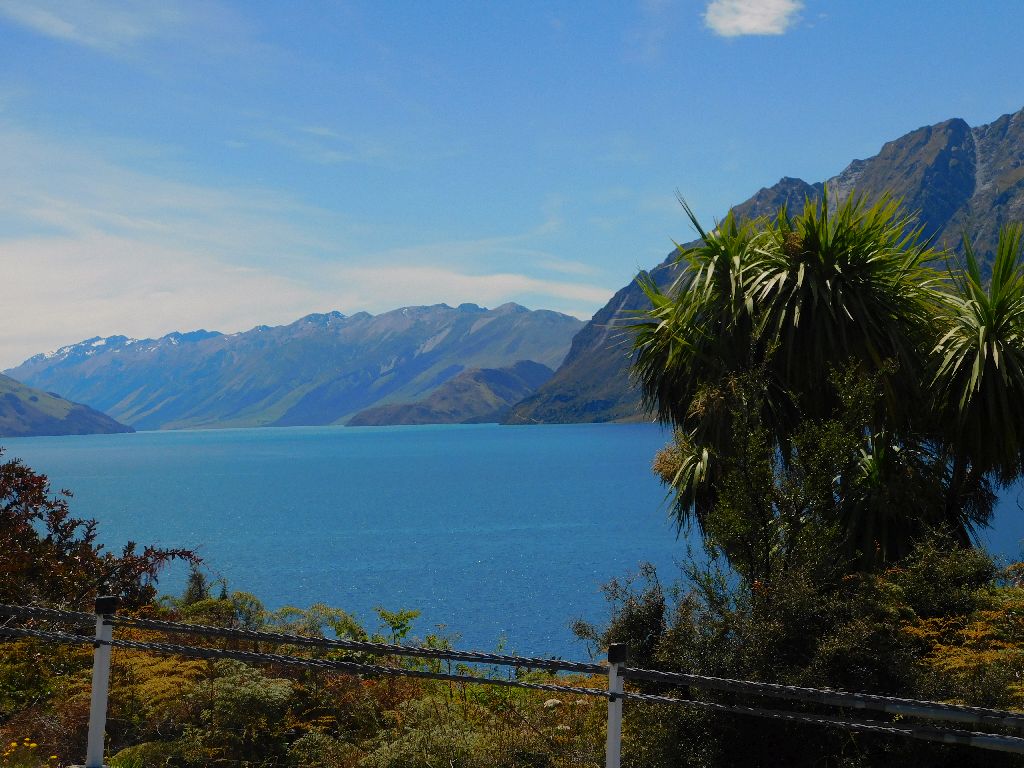
Now, sipping coffee and nibbling on chocolate–snug and dry in our cabin–I was grateful that we had dragged so many extra pounds of food and holiday treats uphill to this remote mountain valley. The bar and restaurant at our wilderness resort were closed for the three day Christmas vacation. So was the little Makarora village grocery store. And it would be another two days of pedaling before we reached the next store in Haast on the coast. That night, in the communal campground kitchen, we feasted on a backcountry version of Lorenz’s traditional German Christmas dinner—sausage and mashed potatoes with carrots—polishing it off with a steamed canned British Christmas pudding.
The next morning, stuffed with Christmas chocolates and cake, we climbed easily over 1844 foot (562 meter) Haast Pass. We whizzed down the other side, stopping to visit the many sparkling waterfalls gushing from the rain laden mountain streams on the way. Gradually, the Haast River on our right braided wider and wider—its rocky meandering banks crisscrossed by streams below jagged, glaciated mountains. The silent, unspoiled landscape was breathtaking and intimidating. Finally, as we neared Haast and the ocean, a few lonely houses appeared. I was both sad to leave the natural beauty of this remote region, and yet, also very relieved to finally find a tiny town with an (admittedly limited) grocery store where we could replenish our now empty panniers.
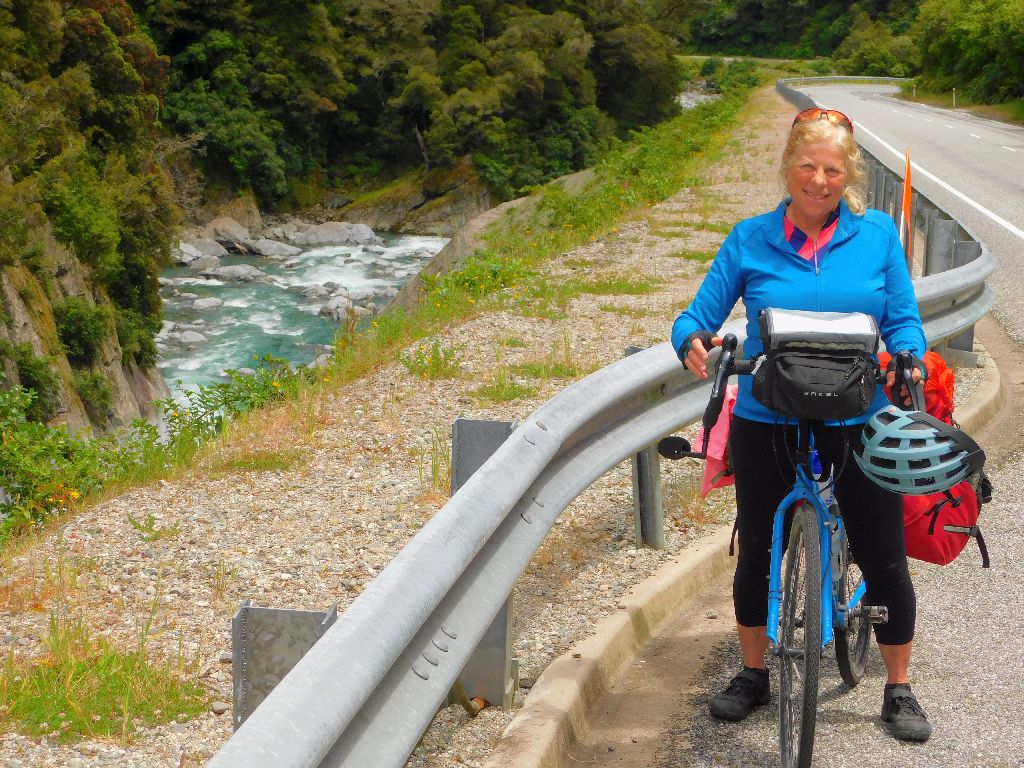
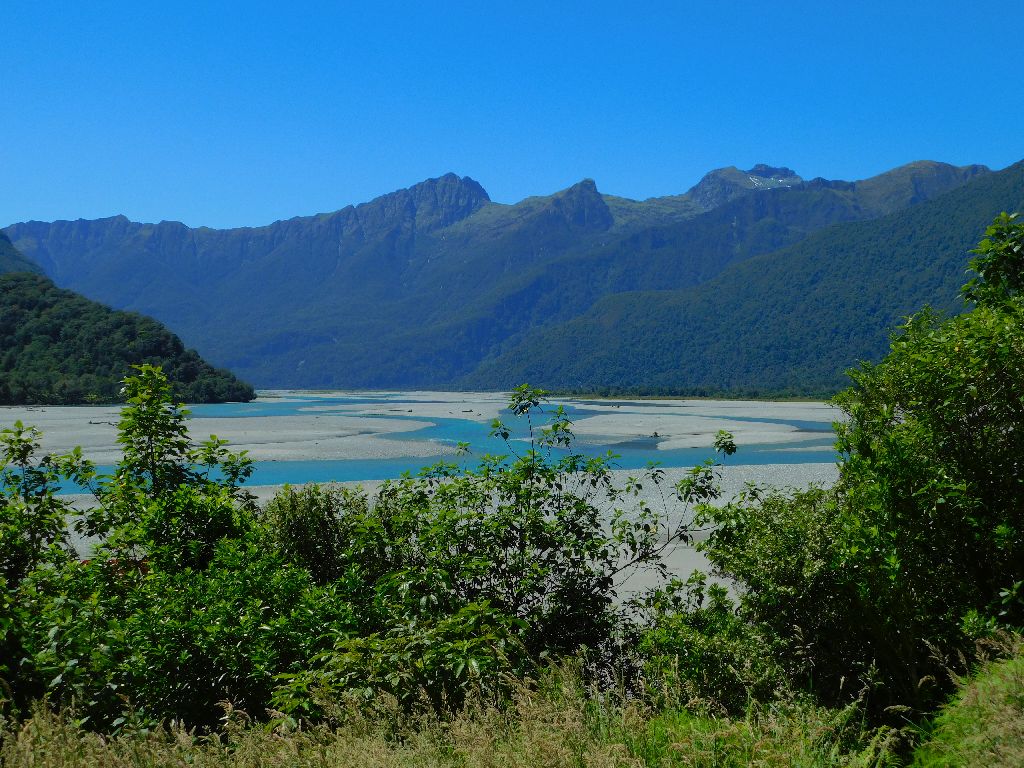
The next few days, as we pedaled north along the west coast, we would catch intermittent glimpses of the wild and often stormy Tasman Sea. As we reached the top of steep rocky headlands, we’d gaze out at the empty, undulating verdant coastline spreading before us for miles. Occasionally we’d drop to the beach and find a spot to walk along its rocky shores. But often the road took us inland, away from the pummeling winds and waves of this notoriously dangerous coast. We cycled through dense, cascading and strange forests of feathery fern trees, spiky cabbage trees, and spindly umbrella-shaped podcarp trees. Our campsites along the west coast were some of the most beautiful spots on our one month bike tour. Popping our tent up in the extremely basic and remote New Zealand free camps, we fell asleep to the sound of wild glacial rivers; cooked backcountry meals on the shores of untouched lakes; and awoke to awe-inspiring views of towering glacier capped mountains above our tent.



Of course, it was not all sunshine and glaciers. There were the relentless vicious sandflies, that chewed on our ankles and legs, leaving large itching welts that lasted for days. And the rain—sometimes a slow drizzle, but equally often, a quick outburst that passed through and left bright sunlit mountains in its wake. One entire horrendous day we pedaled through 74 kilometers of nonstop rain–cascading, pounding drops that hit so hard, it felt like hundreds of needles landing on my arms. As we slushed our way into the village of Fox Glacier, every inch of us soaked to the bone, and shivering with cold, I understood why so few people had settled on this wild, wet coast, that averages over 170 inches of rain a year.
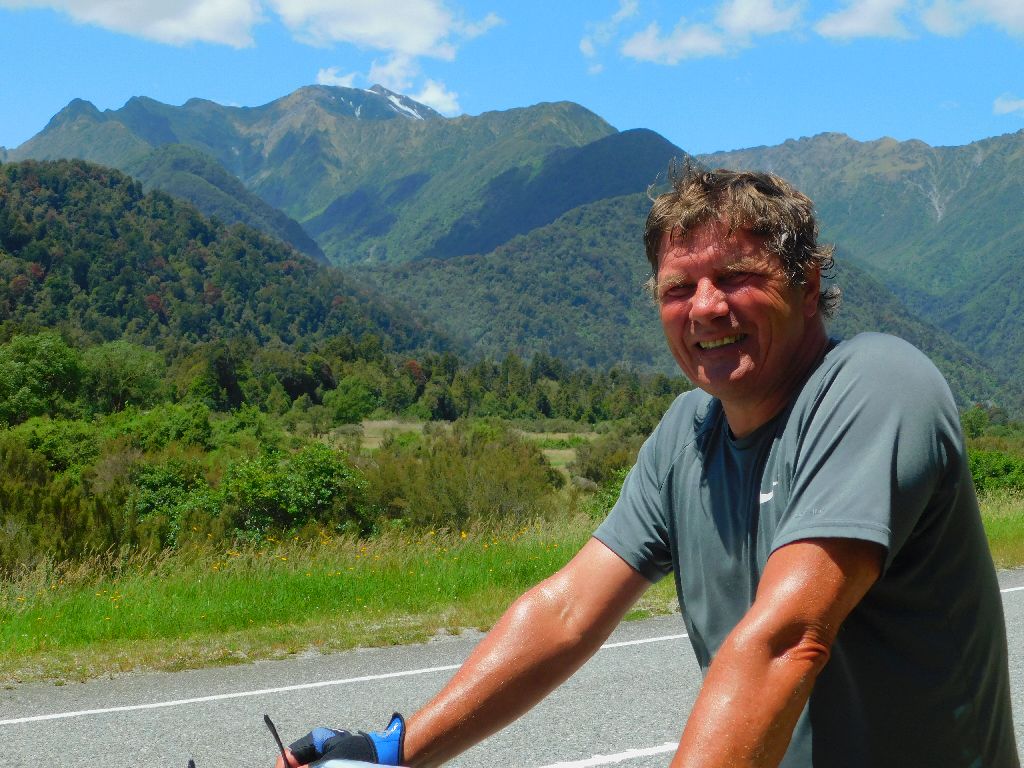
The next day, the sun was back out, sparkling on the glistening glaciers, tourist helicopters flying nonstop over the huge icefields. We chose to use our own pedal power to cycle and then hike up the scenic gravel road to the panorama of the Fox Glacier terminus, its wall of ice and gravel and streaked dirt pushing down the valley below us. Our views of the glaciers and Mount Cook continued to dominate the skyline as we cycled up and over, up and over and (damn, not again!!) up and over the triple 1200 foot mountain saddles between Fox and Franz Joseph Glacier.
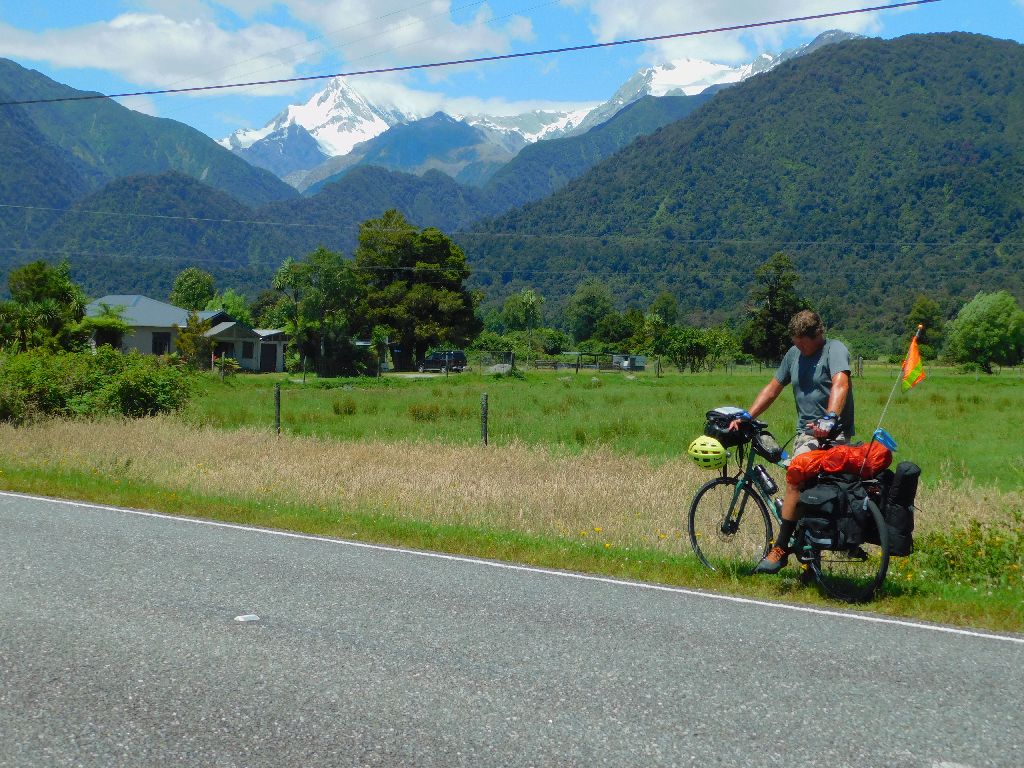
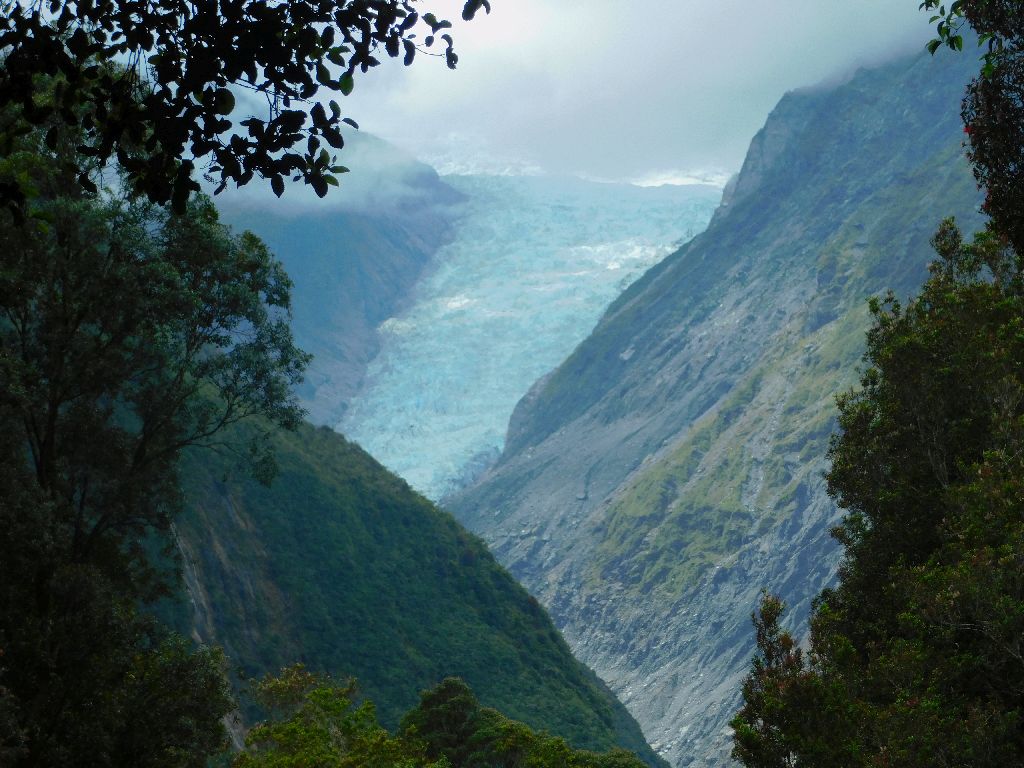
Finally, we turned back towards the ocean, the Alps receding slowly behind us in the distance. As we pedaled over undulating hills, the landscape slowly began to open up to wider vistas. First scattered houses, then small historic villages dotted the road until we reached the long flat coast. From Hokitika, we were tempted to take the 100 kilometer gravel Westcoast Wilderness trail https://westcoastwildernesstrail.co.nz/ to Greymouth, following an old gold mining route inland. But we had tickets in two days for New Zealand’s famed TransAlpine train from Greymouth back to Christchurch; and honestly we’d spent enough time on gravel roads in the wilderness. Eagerly, we zoomed along the flat, easy forty-one kilometers to ‘civilization’: dreaming of a soft bed and shower in a motel.
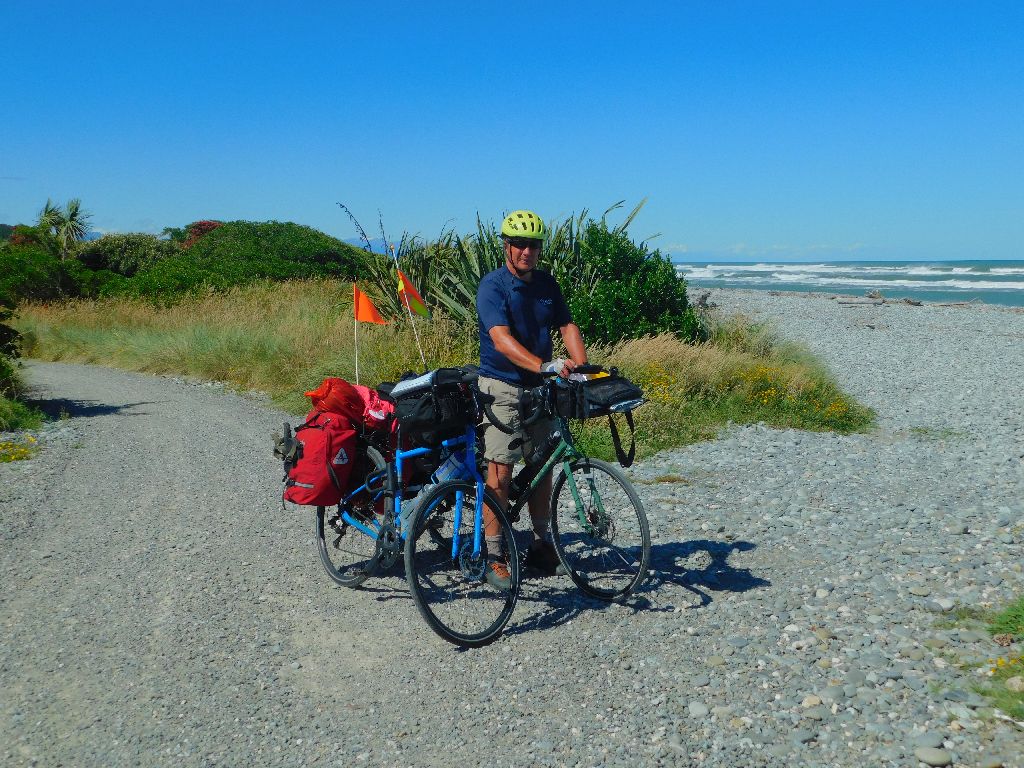
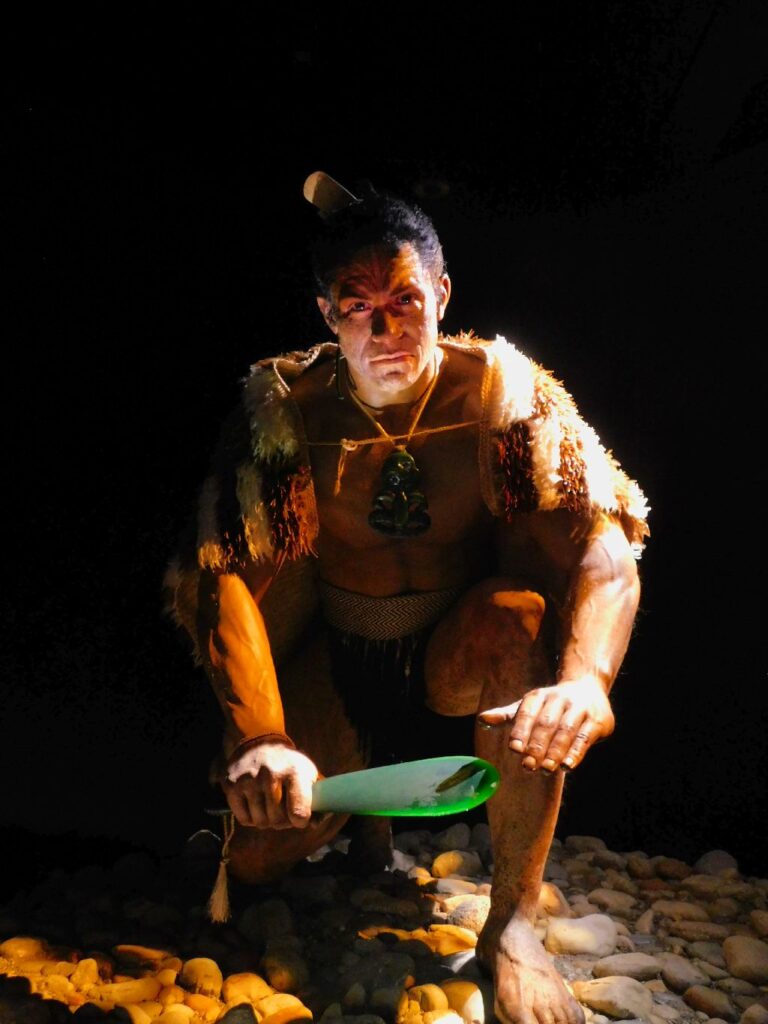
Our last morning, before boarding the train in Greymouth, we toured the outstanding, high tech Pounamu Pathway Museum, immersing ourselves in gorgeous audio-visual displays narrating the story of the indigenous west coast Maori people and their powerful greenstone.
As I gazed out the windows of the TransAlpine train, traversing the Alps one last time back to our start in Christchurch, I squeezed Lorenz’s hand—amazed and proud that we had completed this challenging but stunningly beautiful 1100 kilometer wilderness mountain circuit. Truly it had earned its reputation as one of the top cycling routes in the world!
To read about the first part of our journey around the southern Alps circuit go to “Cycling New Zealand’s Southern Alps”
For a detailed description of the West Coast cycling route, you can download a pdf copy or buy the fantastic Tour Aoteara (South Island) book.
Want more great cycling adventures, photos and stories or have questions about a trip you want to take? Email us at info@bike4breath.com. Follow us on Instagram @bike4breath or sign up for our blog at https://bike4breath.com/contact-us/. You might also love reading our book, Breathtaking: How one family cycled around the world for clean air and asthma about our family’s cycling adventures around the world–through 24 countries across Europe, Asia, the South Pacific and North America.

